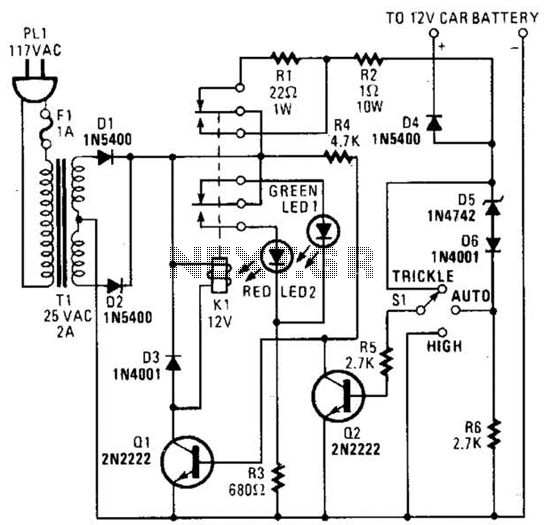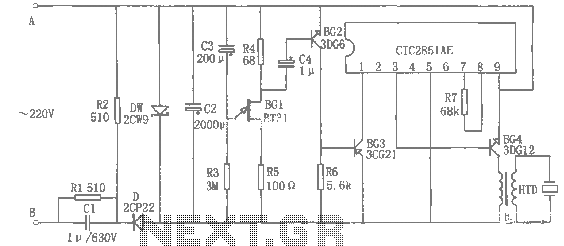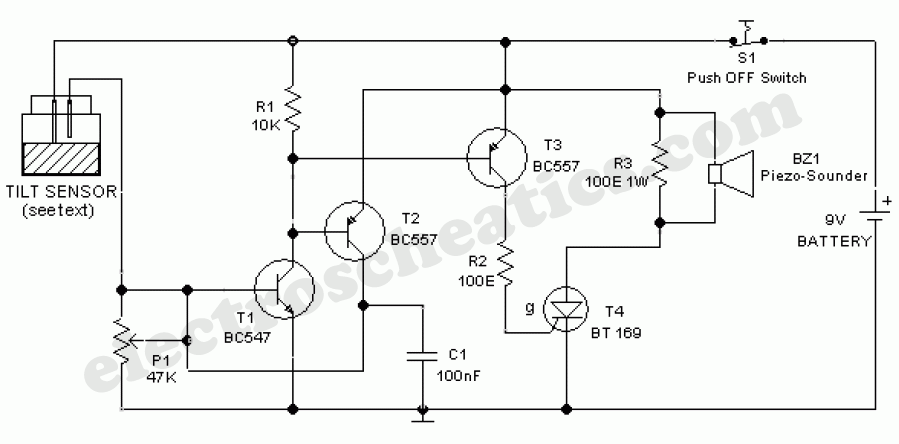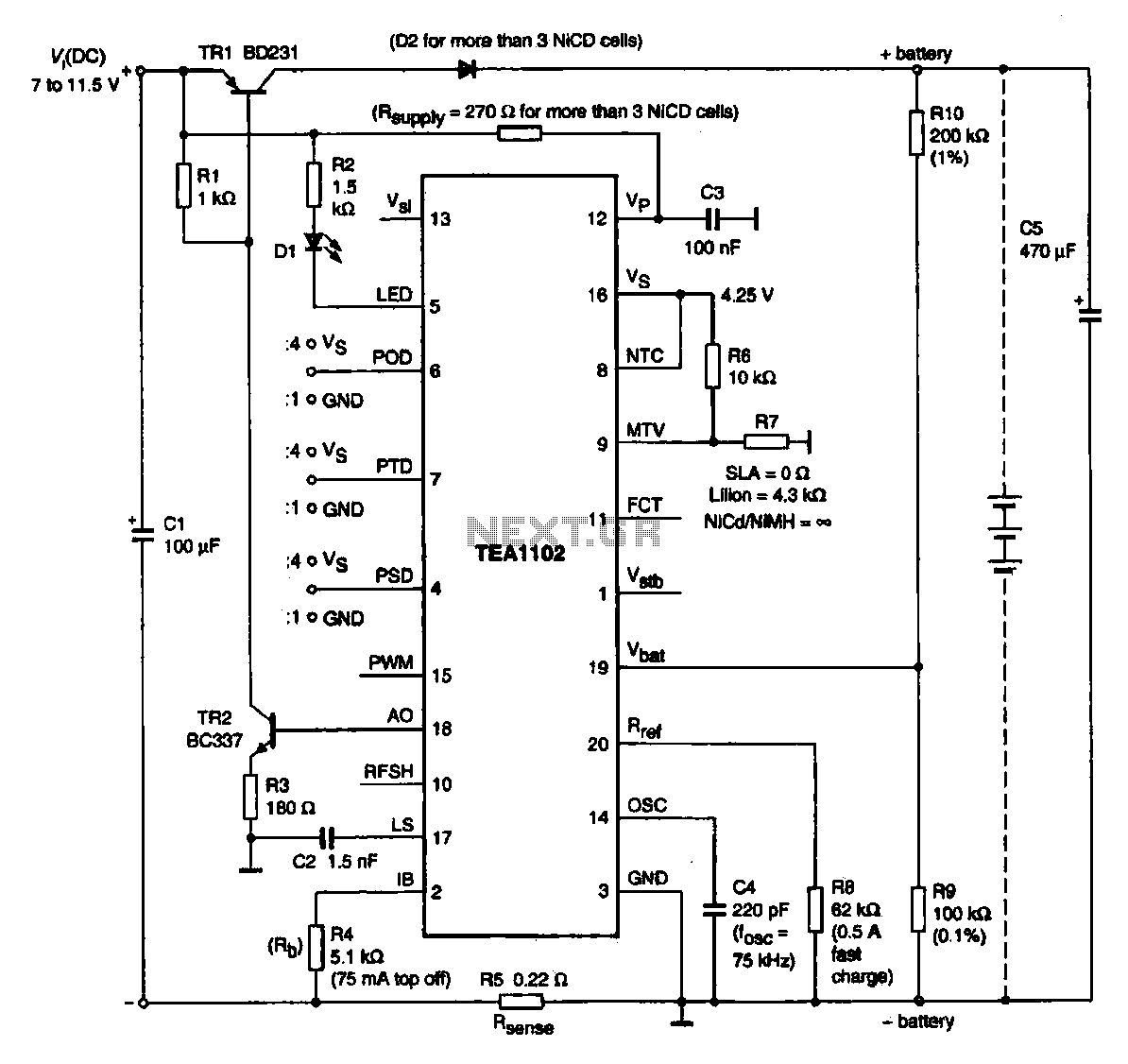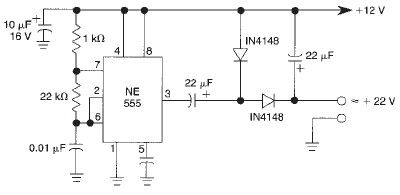
uc3845 sync pulse generator circuit
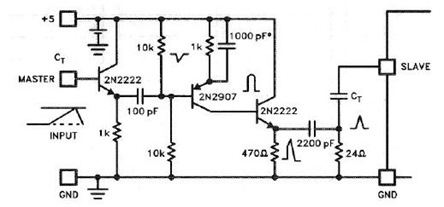
The UC3842, UC3843, UC3844, and UC3845 series of oscillators can generate synchronization pulses without requiring numerous external components. The following circuit illustrates the Sync Pulse Generator Circuit Diagram for the UC3842/3/4/5. This sync pulse circuitry is capable of operating at several hundred kilohertz with minimal delays between master and slave components, as detailed in the application note datasheet.
The UC3842 series is designed for use in various applications where synchronization of multiple circuits is essential. These integrated circuits are capable of generating high-frequency pulse signals that can drive other components in a system, ensuring that they operate in harmony. The architecture of the UC3842 series includes a voltage-controlled oscillator, which allows for precise control over the frequency of the generated sync pulses.
In a typical application, the sync pulse generator circuit can be configured with a few passive components, such as resistors and capacitors, to set the desired frequency and duty cycle. The output of the oscillator can be connected to the input of other devices, such as microcontrollers or power converters, facilitating synchronized operation across the system.
The UC3842 series oscillators are particularly advantageous in applications that require high efficiency and reliability, such as power supplies and motor control systems. The ability to operate at several hundred kilohertz makes these devices suitable for high-speed applications, where timing and synchronization are critical.
When designing a circuit using the UC3842 series, careful consideration should be given to the layout and placement of components to minimize noise and interference. Proper decoupling of the power supply and grounding techniques can enhance the performance of the sync pulse generator, ensuring stable operation across varying conditions.
In summary, the UC3842, UC3843, UC3844, and UC3845 oscillators provide a robust solution for generating synchronization pulses with minimal external components, making them an excellent choice for a wide range of electronic applications.The series of UC 3842, 3843, 3844 and 3845 Oscillators can be used to generate sync pulses which no need to have a lot of external components. As seen in the following circuit, it shows Sync Pulse Generator Circuit Diagram of the UC3842/3/4/5. This sync pulse circuitry is useable to several hundred kilohertz with a minimum of delays between master
and slaves, according to the application note datasheet. 🔗 External reference
The UC3842 series is designed for use in various applications where synchronization of multiple circuits is essential. These integrated circuits are capable of generating high-frequency pulse signals that can drive other components in a system, ensuring that they operate in harmony. The architecture of the UC3842 series includes a voltage-controlled oscillator, which allows for precise control over the frequency of the generated sync pulses.
In a typical application, the sync pulse generator circuit can be configured with a few passive components, such as resistors and capacitors, to set the desired frequency and duty cycle. The output of the oscillator can be connected to the input of other devices, such as microcontrollers or power converters, facilitating synchronized operation across the system.
The UC3842 series oscillators are particularly advantageous in applications that require high efficiency and reliability, such as power supplies and motor control systems. The ability to operate at several hundred kilohertz makes these devices suitable for high-speed applications, where timing and synchronization are critical.
When designing a circuit using the UC3842 series, careful consideration should be given to the layout and placement of components to minimize noise and interference. Proper decoupling of the power supply and grounding techniques can enhance the performance of the sync pulse generator, ensuring stable operation across varying conditions.
In summary, the UC3842, UC3843, UC3844, and UC3845 oscillators provide a robust solution for generating synchronization pulses with minimal external components, making them an excellent choice for a wide range of electronic applications.The series of UC 3842, 3843, 3844 and 3845 Oscillators can be used to generate sync pulses which no need to have a lot of external components. As seen in the following circuit, it shows Sync Pulse Generator Circuit Diagram of the UC3842/3/4/5. This sync pulse circuitry is useable to several hundred kilohertz with a minimum of delays between master
and slaves, according to the application note datasheet. 🔗 External reference
